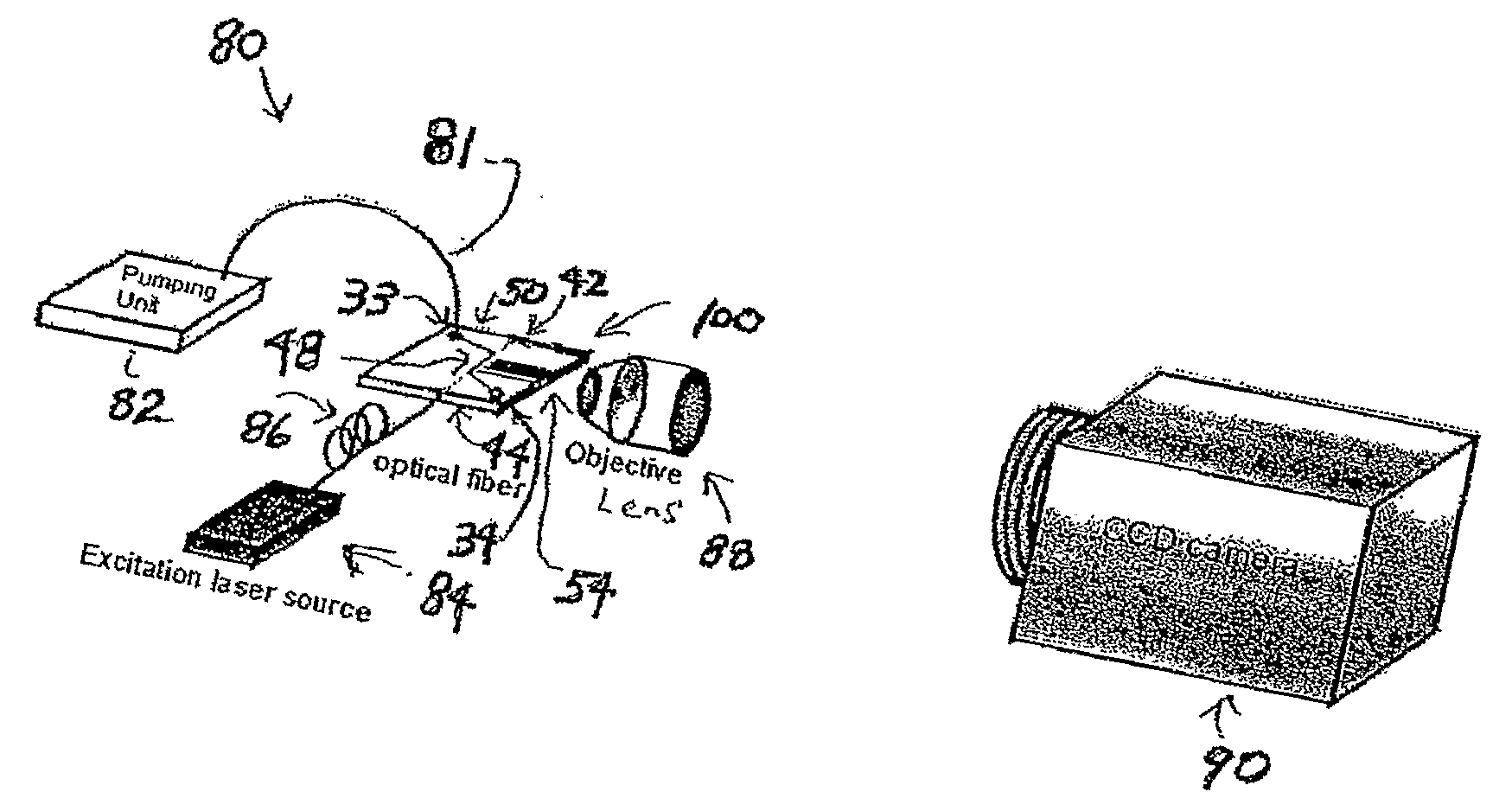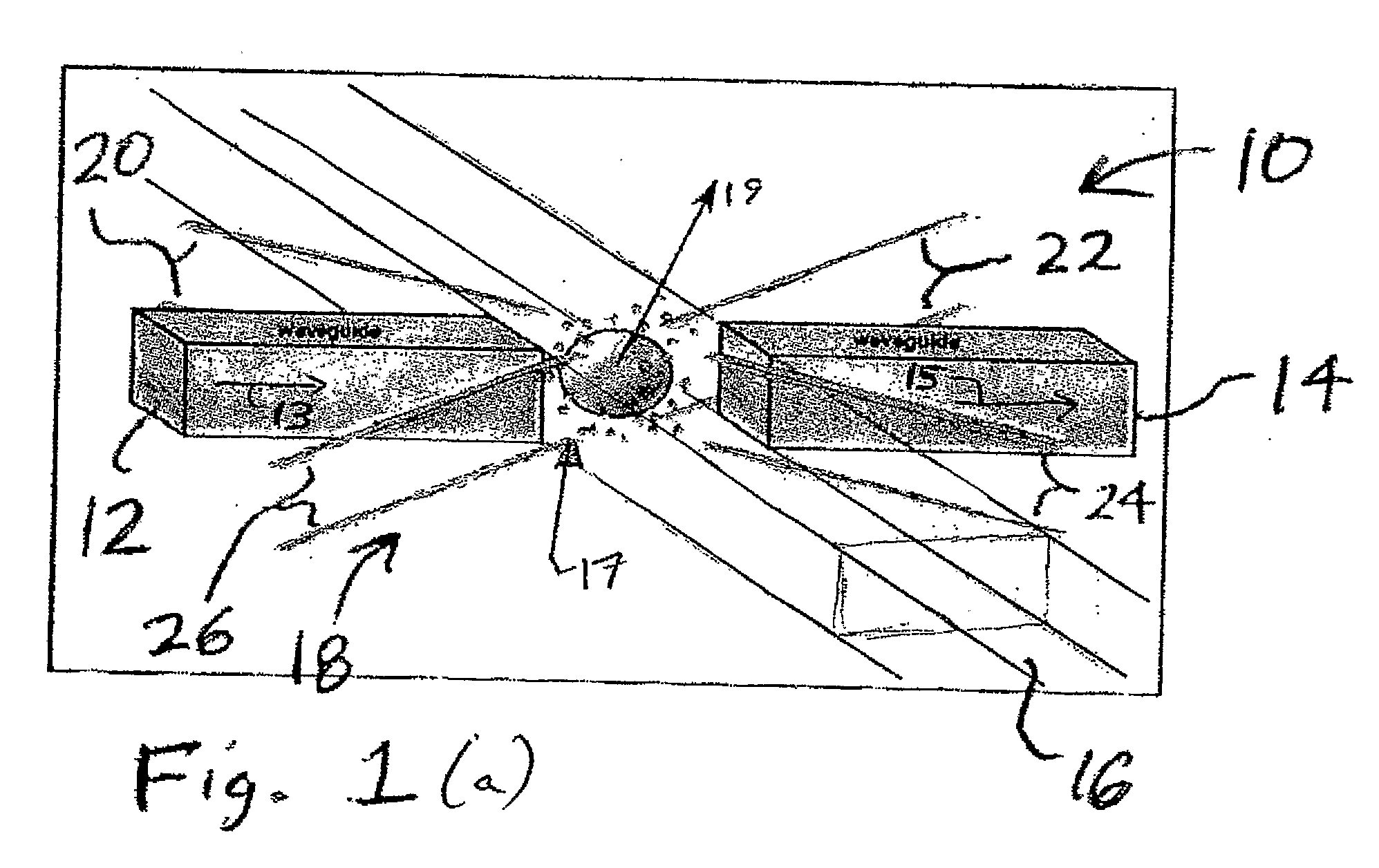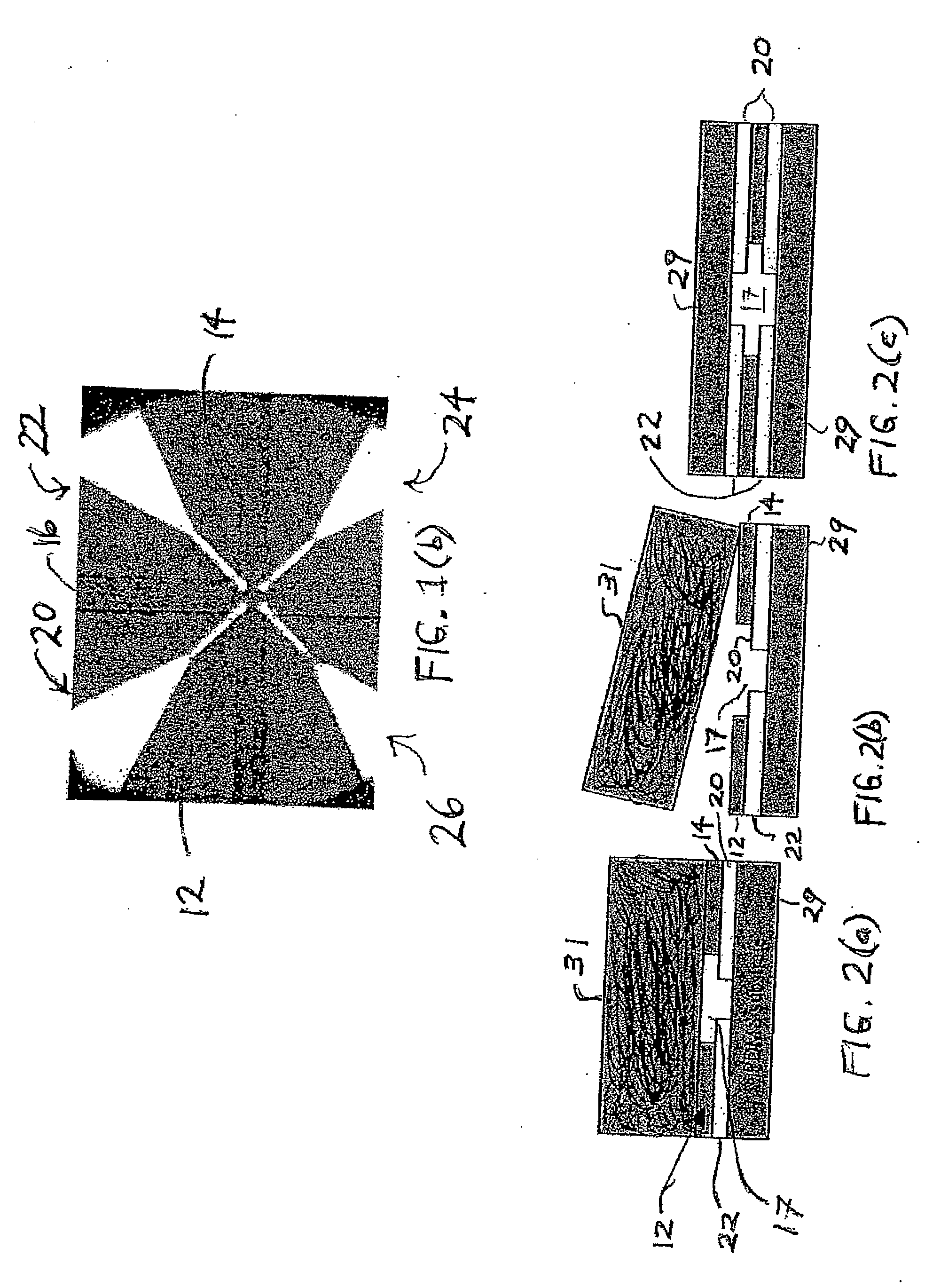Apparatus and Method for Improved Optical Detection of Particles in Fluid
- Summary
- Abstract
- Description
- Claims
- Application Information
AI Technical Summary
Benefits of technology
Problems solved by technology
Method used
Image
Examples
Embodiment Construction
[0029]As described in detail below, the present invention is intended to encompass a variety of different embodiments of microfluidic-photonic integrated circuits and similar devices, as well as systems that implement those integrated circuits and devices. Such devices can be employed for a variety of purposes including, for example, to detect the presence of biological particles such as cells and DNA or other particles, and / or in various applications such as flow cytometry and other techniques. Additionally, the present invention is intended to encompass various methods of operating and manufacturing such integrated circuits and other devices (and / or systems that implement those integrated circuits and devices). In at least some embodiments, for example, microfluidic-photonic-dielectrophoretic integrated circuits can be fabricated by way of a process involving micro-molding, polymer bonding, and channel waveguides with capillary filling. At least some of the circuits described here...
PUM
| Property | Measurement | Unit |
|---|---|---|
| Time | aaaaa | aaaaa |
| Flow rate | aaaaa | aaaaa |
| Sensitivity | aaaaa | aaaaa |
Abstract
Description
Claims
Application Information
 Login to View More
Login to View More - R&D
- Intellectual Property
- Life Sciences
- Materials
- Tech Scout
- Unparalleled Data Quality
- Higher Quality Content
- 60% Fewer Hallucinations
Browse by: Latest US Patents, China's latest patents, Technical Efficacy Thesaurus, Application Domain, Technology Topic, Popular Technical Reports.
© 2025 PatSnap. All rights reserved.Legal|Privacy policy|Modern Slavery Act Transparency Statement|Sitemap|About US| Contact US: help@patsnap.com



